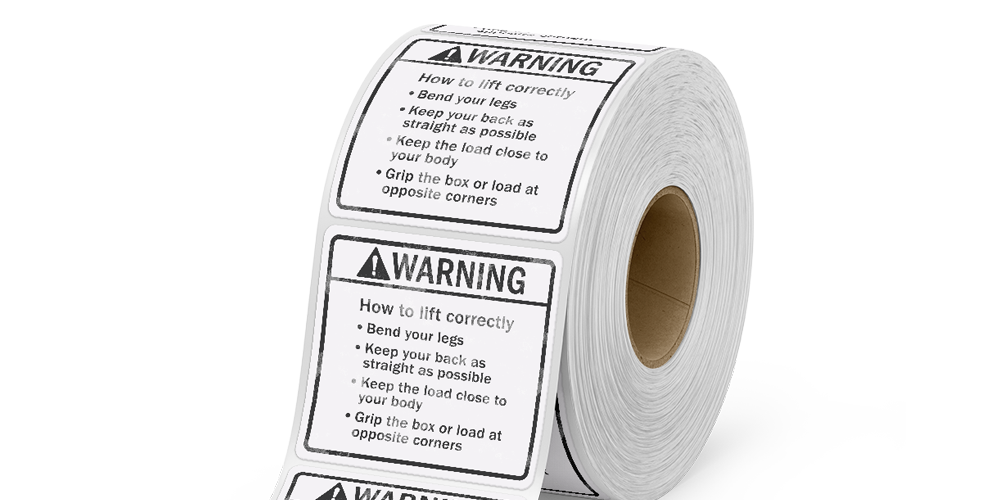Why Direct Thermal Labels Fade & How to Stop It

Direct thermal labels fading is often caused by the heat-sensitive materials that react to temperature, light, and chemical exposure. This reaction causes the label to darken or lose legibility, especially when exposed to heat or harsh environments. Fading can also occur if labels come into contact with oils, cleaning agents, or abrasion during handling.
To extend their lifespan, you’ll need to store them properly, minimize exposure to damaging elements, and choose high-quality blank labels with protective coatings when possible.
Why Do Direct Thermal Labels Fade?
Exposure to Heat and Sunlight
Direct thermal labels are designed to react to heat. Unfortunately, prolonged exposure to high temperatures or direct sunlight can cause the label to darken and become unreadable.
Contact with Chemicals and Oils
Chemicals like alcohol, oils, and cleaning agents can break down the thermal coating, causing the label to fade or smear.
Abrasion and Physical Damage
Frequent handling or friction can wear away the printed surface, especially if the label lacks a protective coating.
Aging and Prolonged Storage
Over time, labels naturally degrade. Extended storage in warm or humid environments accelerates this process, making the print less legible.
How to Prevent Fading on Direct Thermal Labels
Use of Protective Coatings
Opt for direct thermal labels with a protective topcoat to reduce fading from light, chemicals, and abrasion.
Proper Storage Practices
Store unused labels in a cool, dry place, away from direct sunlight and heat sources. This helps preserve the heat-sensitive coating.
Choosing High-Quality Direct Thermal Labels
Invest in premium-grade labels designed to withstand environmental stressors. Lower-quality labels tend to fade faster and may not perform well in demanding conditions.
Best Practices for Handling and Usage
- Avoid excessive handling or rubbing.
- Keep labels away from harsh chemicals.
- Use protective covers if labels are exposed to the elements.
What Are Direct Thermal Labels and How Do They Work?
Direct thermal labels are made from heat-sensitive materials that darken when exposed to a thermal printhead. Unlike thermal transfer labels, they do not require a ribbon, making them cost-effective and efficient for short-term labeling needs.
The Technology Behind Direct Thermal Printing
Direct thermal printing uses a printhead that heats specific areas on the label to create an image. The label itself contains a chemical coating that darkens upon heat exposure. This method is fast and straightforward but makes the labels vulnerable to fading.
Common Uses for Direct Thermal Labels
- Shipping and Logistics: Barcode and tracking labels.
- Retail and Inventory: Price tags and product labeling.
- Healthcare: Prescription and patient ID labels.
- Food Packaging: Expiry and date codes.
Choosing the Right Label for Your Application
Selecting the right label type is crucial for maintaining clear, long-lasting prints. Whether you need direct thermal labels for short-term use or thermal transfer labels for durability, choosing high-quality options makes a difference.
Check out our range of direct thermal printer labels designed to perform in demanding environments.
Frequently Asked Questions (FAQs)
Why are my direct thermal labels fading?
Direct thermal labels fade because they use heat-sensitive materials that react to temperature, light, and chemicals, causing discoloration and loss of readability.
Can I prevent fading on existing labels?
Unfortunately, once fading has occurred, it cannot be reversed. However, using top-coated labels from the start can help prevent fading.
Are there protective coatings to extend label life?
Yes, many direct thermal labels come with a topcoat that protects against moisture, abrasion, and light exposure.
How do I know if my labels are fading due to heat or chemicals?
Fading from heat typically causes overall darkening, while chemical exposure often leads to smearing or spotty fading.
Are thermal transfer labels better for long-lasting applications?
Yes, thermal transfer labels use ribbons that provide more durable and fade-resistant prints than direct thermal methods.
How should I store unused direct thermal labels to prevent fading?
Store them in a cool, dry place, away from direct sunlight and heat, to maintain the label's quality over time.


